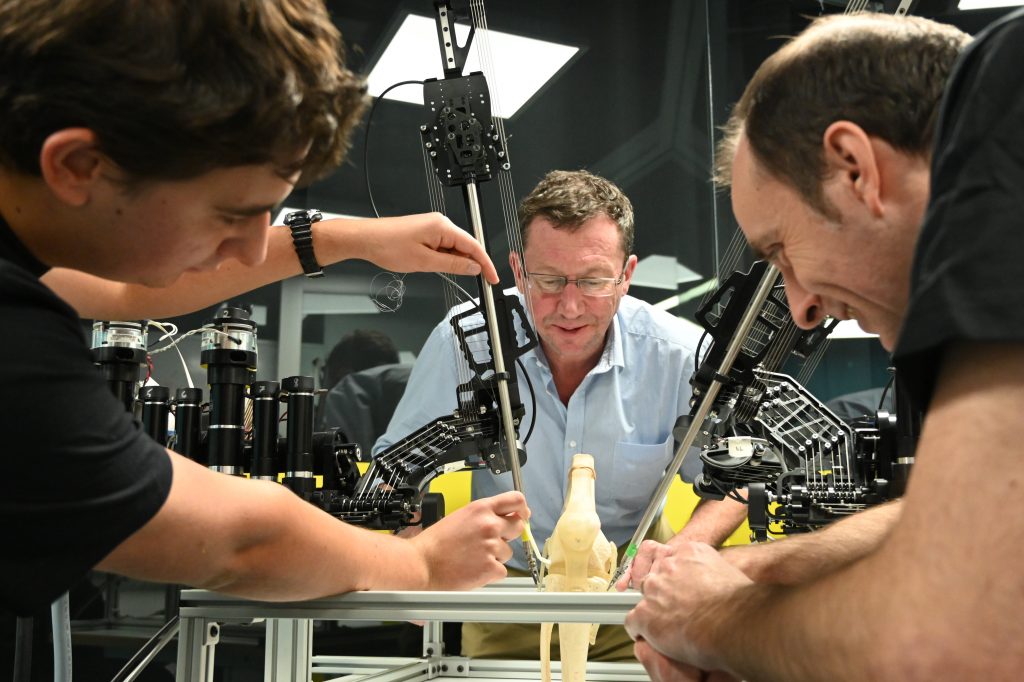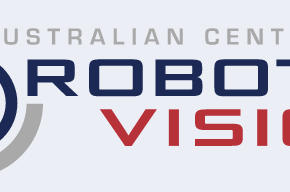
Robohub.org
Using artificial evolution to design bespoke surgical snakebots

In a world first, Australian Centre for Robotic Vision researchers are pushing the boundaries of evolution to create bespoke, miniaturised surgical robots, uniquely matched to individual patient anatomy.
The cutting-edge research project is the brainchild of Centre PhD researcher Andrew Razjigaev, who impressed HRH The Duke of York with the Centre’s first SnakeBot prototype designed for knee arthroscopy, last November.

Now, the young researcher, backed by the Centre’s world-leading Medical and Healthcare Robotics Group, is taking the next step in surgical SnakeBot’s design.
In place of a single robot, the new plan envisages multiple snake-like robots attached to a RAVEN II surgical robotic research platform, all working together to improve patient outcomes.

The novelty of the project extends to development of an evolutionary computational design algorithm that creates one-of-a-kind, patient-specific SnakeBots in a ‘survival-of-the-fittest’ battle.
Only the most optimal design survives, specifically suited to fit, flexibly manoeuvre and see inside a patient’s knee, doubling as a surgeon’s eyes and tools, with the added bonus of being low-cost (3D printed) and disposable.
Leading the QUT-based Medical and Healthcare Robotics Group, Centre Chief Investigator Jonathan Roberts and Associate Investigator Ross Crawford (who is also an orthopaedic surgeon) said the semi-autonomous surgical system could revolutionise keyhole surgery in ways not before imagined.
Professor Crawford stressed the aim of the robotic system – expected to incorporate surgical dual-arm telemanipulation and autonomous vision-based control – was to assist, not replace surgeons, ultimately improving patient outcomes.
“At the moment surgeons use what are best described as rigid ‘one-size-fits-all’ tools for knee arthroscopy procedures, even though patients and their anatomy can vary significantly,” Professor Crawford said.
He said the surgical system being explored had the potential to vastly surpass capabilities of current state-of-the-art surgical tools.

“The research project aims to design snake-like robots as miniaturised and highly dexterous surgical tools, fitted with computer vision capabilities and the ability to navigate around obstacles in confined spaces such as the anatomy of the human body,” Professor Crawford said.
“Dexterity is incredibly important as the robots are not only required to reach surgical sites but perform complicated surgical procedures via telemanipulation.”
Professor Roberts said the research project was a world-first for surgical robotics targeting knee arthroscopy and would not be possible without the multi-disciplinary expertise of researchers at the Australian Centre for Robotic Vision.
“One of the most exciting things about this project is that it is bringing many ideas from the robotics community together to form a practical solution to a real-world problem,” he said.
“The project has been proceeding at a rapid pace, mainly due to the hard work and brilliance of Andrew, supported by a team of advisors with backgrounds in mechanical engineering, mechatronics, aerospace, medicine, biology, physics and chemistry.”

Due to complete his PhD research project by early 2021, Andrew Razjigaev graduated as a mechatronics engineer at QUT in 2017 and has been a part of the Centre’s Medical and Healthcare Robotics Group since 2016.
The 23-year-old said: “Robotics is all about helping people in some way and what I’m most excited about is that this project may lead to improved health outcomes, fewer complications and faster patient recovery.
“That’s what really drives my research – being able to help people and make a positive difference. Knee arthroscopy is one of most common orthopaedic procedures in the world, with around four million procedures a year, so this project could have a huge impact.”
Andrew said he hoped his work would lead to real-world development of new surgical tools.
“Surgeons want to do the best they can and face a lot of challenges,” he said. “Our objective is to provide surgeons with new tools to be able to perform existing surgery, like knee arthroscopy, more efficiently and safely and to perhaps perform surgery that is simply too difficult to attempt with today’s tools.
“It’s also incredibly cool to use evolution in my work! There’s no question we’re witnessing the age-old process – the only difference being it’s happening inside a computer instead of nature.”

- The process starts with a scan of a patient’s knee. With the supervision of a doctor, the computer classifies the regions for the SnakeBots to reach in the knee (green area) and regions to avoid (red area).
- The resulting geometry makes a 3D environment for the SnakeBots to compete in the simulated evolution. It enables a number of standard SnakeBot designs to be tested and scored on how well they perform – namely how well they manoeuvre to sites inside a patient’s knee. The black lines in the test show some of the trajectories a SnakeBot took to manoeuvre to those sites.
- The evolutionary computational design algorithm kicks in, continually creating new generations of SnakeBots, re-testing and killing off weaker variants until one survives, uniquely matched to an individual patient’s anatomy. The SnakeBot that can safely reach those targets with more dexterity wins the battle of evolution and claims the optimal design.
- The optimal SnakeBots are generated into 3D models to be 3D printed as low-cost, disposable surgical tools unique to each patient.
- They are now ready to be deployed for surgery! The micro SnakeBots are attached to a larger, table-top robotic platform (like the RAVEN II) that positions them for entry into surgical incision sites.
- It is expected that two SnakeBots are fitted with surgical instruments at their tips to enable a surgeon to perform dual-arm teleoperated surgical procedures.
- A third SnakeBot in the multi-bot system will have a camera installed at its tip. This camera system will be used by a robotic vision system to map a patient’s body cavity so that the robot can be steered towards the areas of interest and away from delicate areas that should be avoided. It will track the two arms and surgical area simultaneously, working as the eyes of the surgeon.
Find out more about the work of the Centre’s Medical and Healthcare Robotics Group in our latest annual report.



